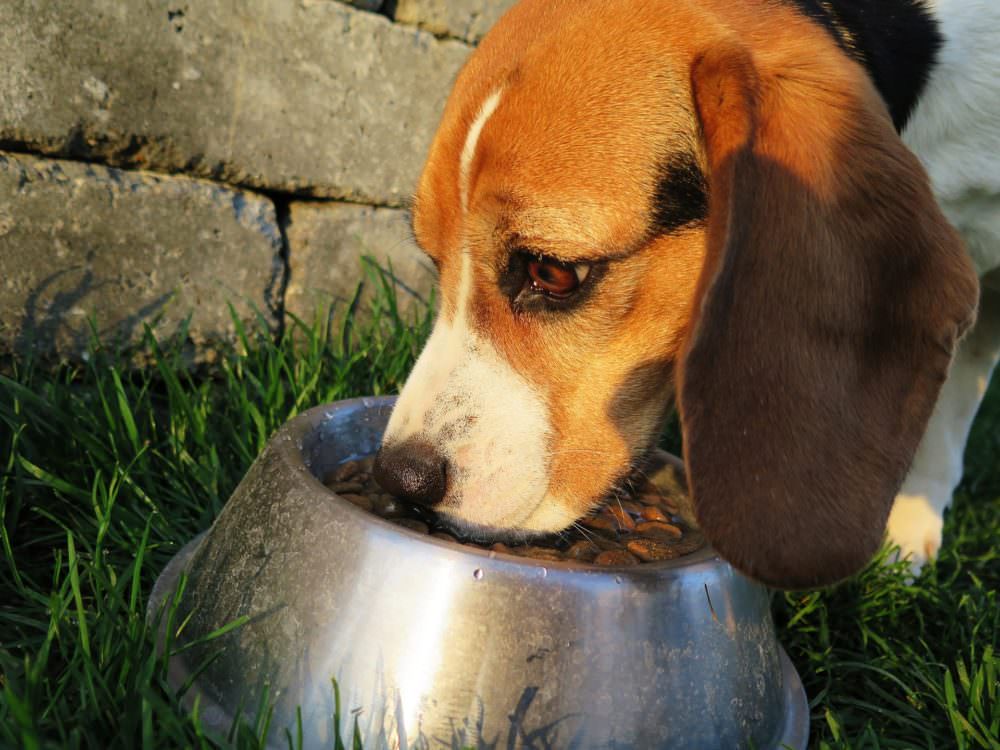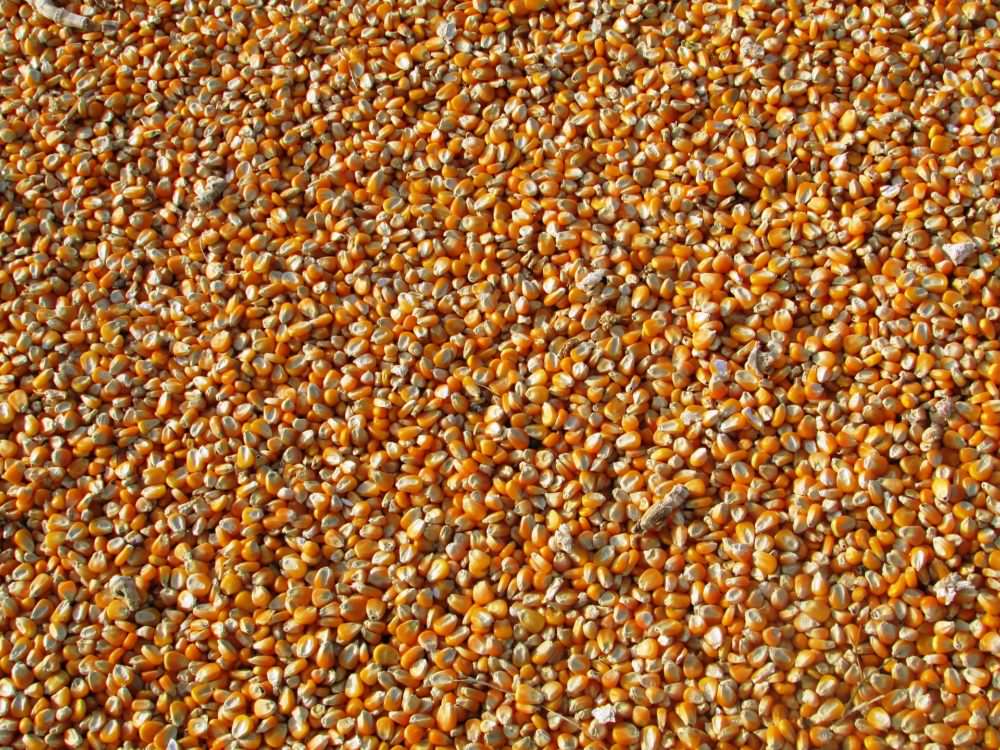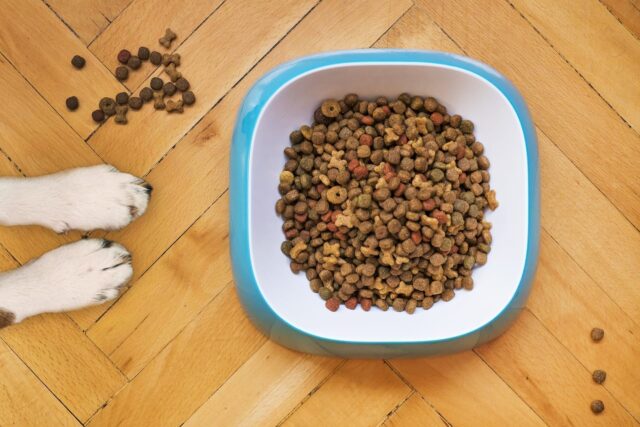Think back to your last trip to your grocery store. Did you pick up an item, turn it around, and read the label? Now, think about your last trip to your pet store. Did you read that label? Are you able to identify the ingredients that are healthy and the ones that are not? It might surprise you how many popular kibble brands have dog food ingredients to avoid.
Do you have your dog’s food label in front of you? If not, bookmark this page for future reference to cross check the ingredients in your dog’s food. We’re going to break down seven ingredients that should help you make healthy choices for your pet.
Hint: our list of the 9 Best Dry Dog Foods is a cheat sheet for giving your dog a healthy meal that avoids these ingredients!

Dog Food Ingredients to Avoid
Even the most popular brands of dog food could have unhealthy ingredients. So, it’s important for dog parents to analyze the food themselves. The following ingredients might not lead to recalls, but they can make your pup’s health decline. If you see any of these items listed in your dog’s food, improve their diet as soon as you can.
Ethoxyquin
Ethoxyquin is commonly found in most dog foods since it’s a preservative. In fact, this product was first developed for herbicide. Soon, veterinarians noticed that ethoxyquin is often associated with the development of kidney and liver damage, cancer (liver, spleen, stomach, skin), immune deficiency syndrome, blindness, and leukemia.
Propylene Glycol
If you know anything about auto care products, you may have recognized this item. Yes, it’s found in anti-freeze! This product in placed in dog food to help reduce moisture and prevent bacteria growth. Your dog needs intestinal bacteria to help absorb and digest the food. Since this ingredient decreases bacteria growth, it also reduces the “good” growth that’s needed. Additionally, it reduces moisture that aids in digestion. As a result, some dogs may develop cancerous lesions in their intestines or develop intestinal blockages.

BHT/BHA
Butylated-hydroxyanisole (BHA) and butylated hydroxytoluene (BHT) are both equally potent and dangerous for your pet. In fact, these two are often found in our food too. BHA is another preservative and is often responsible for kidney damage. BHT, even more potent than BHA, is used to help reduce food spoilage. BHT has been directly linked with cancer for both dogs and humans.
Monosodium Glutamate (MSG)
MSG is used in both human food and dog food, but it can cause problems for both. It’s used as a flavor enhancer to make up for the flavor that low quality ingredients lack. It provides no real benefits for your pup and could even cause allergies for them. By law, dog food companies don’t have to list MSG, but it’s often in some of the ambiguous ingredients on the list. Some examples are hydrolyzed protein, protein isolate, texturized protein, natural flavors, autolyzed yeast, hydrolyzed yeast, yeast extracts, sodium caseinate, calcium caseinate, monopotassium glutamate, and guaylate.
Related: 11 Best Dog Foods For Allergies
Corn Syrup/Corn
Corn syrup is sugar often used to help “sweeten” your dog’s palate. Too much sugar over time may lead to weight gain, diabetes, hyperactivity, and even a change in mental behavior. Corn, a very inexpensive filler, may develop mold or fungus over time, and in turn, may result in death.

Related: The 14 Best Dog Food Toppers
By-Products
This could be chicken, lamb, beef, fish, turkey, and other proteins. “By-products” are the internal remains of an animal, not including the muscle meat. Oftentimes, this will include diseased tissues, organs, and tumors. If the meat in your dog’s food isn’t specific, this could also be a cause for concern. “Meat” or “poultry” are examples of ingredients that are too generic and might not be what you’d expect.
Artificial Colors
Sometimes, companies add dye to kibble to make it look more appealing. But it doesn’t provide any benefits other than appearance. In fact, artificial colors have been linked to hyperactivity and some biochemical processes. So, it’s best to avoid dyes and any other artificial ingredients. Stick to natural ingredients instead.

Choosing the Perfect Dog Food
There are so many dog food ingredients to avoid that the list is huge and keeps growing daily. As a concerned dog parent, what can you do? The best action to take is to begin with research and reading your dog’s food labels. What are the first five ingredients listed? Any of the above? Also, do not overlook your dog’s treats!
If you’re unsure where to begin, this site offers excellent reviews on all dog food products. Or you can keep it simple and check out our recommendations for the Best Dog Foods. How does your product rank? Cost may be the inhibitor in buying quality, natural dog food. If that’s the case, the higher the quality, the less that’s needed to feed. Another option is cooking for your dog. Or, give raw carrots or green beans as a treat. My dogs love carrots, to the point where I need to buy them their own supply!
Related: 9 Best Puppy Dog Foods

Comments are closed.